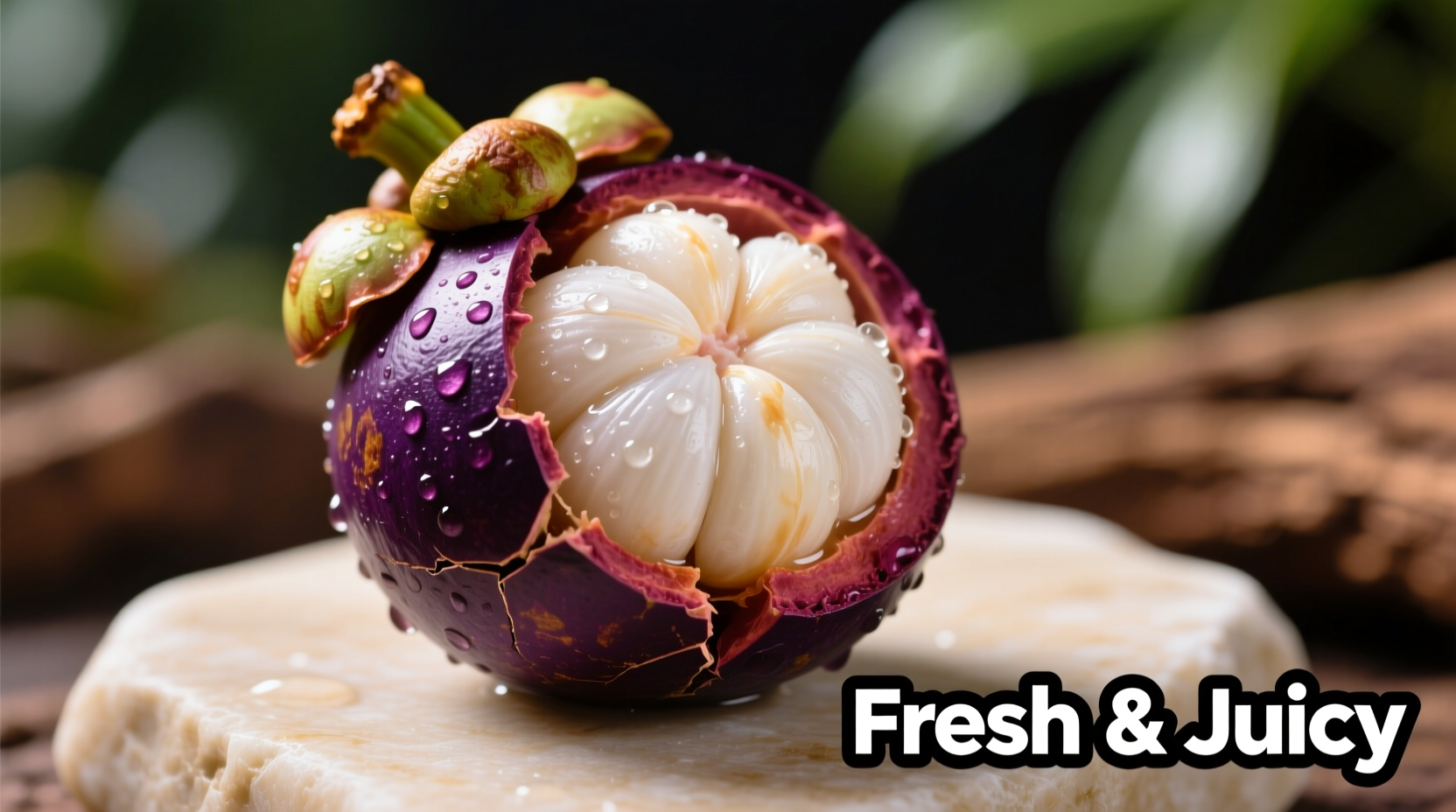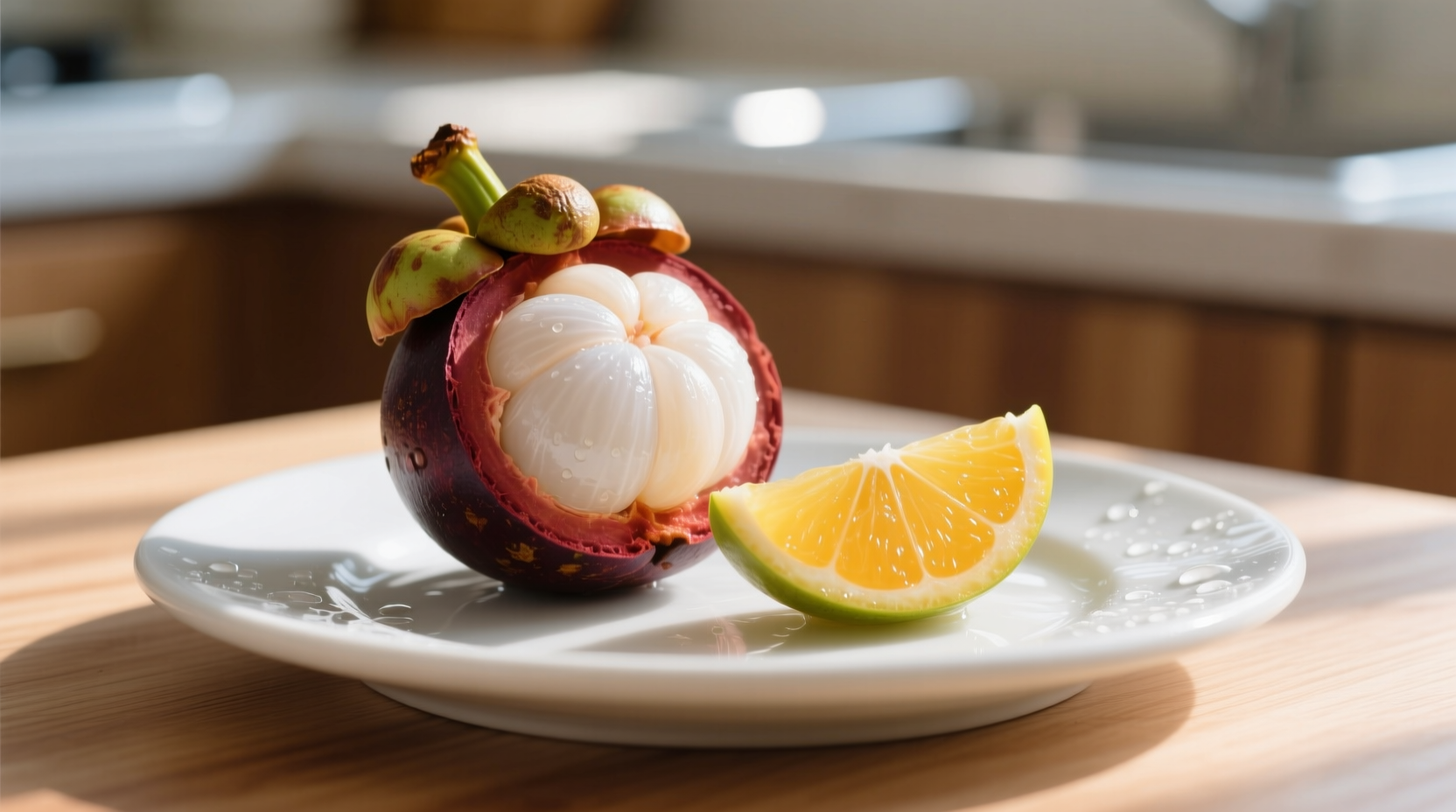Mangosteen has a uniquely sweet-tart flavor profile with delicate notes of peach, strawberry, and citrus, balanced by subtle floral undertones and a refreshing tropical sweetness. The snow-white segments offer a juicy, tender texture similar to lychee but with more complex flavor depth.
Ever wondered what makes the "queen of fruits" so revered across Southeast Asia? This exotic tropical treasure delivers an unforgettable sensory experience that's both refreshingly simple and intriguingly complex. If you've only read about mangosteen or seen its striking purple exterior, you're probably curious: what does mangosteen taste like exactly? Let's explore this culinary mystery together.
Your First Bite: The Mangosteen Sensory Experience
When you crack open a ripe mangosteen's thick, deep purple rind, you're greeted by snowy white segments arranged like garlic cloves. The texture is your first delight—juicy yet firm, with a tender bite that yields effortlessly. Unlike many tropical fruits, mangosteen contains no fibrous strands, making each segment a smooth, clean eating experience.
The flavor unfolds in distinct layers:
- Sweetness: A balanced sugar content (typically 13-17° Brix) provides honey-like sweetness without overwhelming cloyingness
- Tartness: Subtle citrus notes add refreshing brightness that prevents the sweetness from dominating
- Floral notes: Distinct jasmine and peach blossom undertones emerge as you chew
- Tropical complexity: Hints of strawberry, lychee, and even subtle pineapple create a multidimensional profile
According to USDA agricultural research, the unique flavor profile comes from specific volatile compounds including α-mangostin and γ-mangostin, which contribute to both the distinctive taste and the fruit's celebrated antioxidant properties.

How Mangosteen Compares to Familiar Fruits
Understanding what mangosteen tastes similar to helps set expectations if you've never tried this Southeast Asian specialty. The comparison table below shows how mangosteen relates to fruits you likely know:
| Fruit | Similarity to Mangosteen | Key Differences |
|---|---|---|
| Lychee | Similar juicy texture and floral notes | Lychee is more intensely sweet with less complexity; lacks citrus undertones |
| Peach | Shared stone fruit sweetness | Peach has fuzzy skin and fibrous texture; lacks tropical brightness |
| Strawberry | Similar berry-like tartness | Strawberry is more acidic with earthier notes; lacks floral complexity |
| Durian | Both are "king/queen" tropical fruits from Southeast Asia | Durian has strong savory notes and pungent aroma; completely different flavor profile |
Factors That Transform the Flavor Experience
Your mangosteen taste experience varies significantly based on several key factors:
Ripeness Level
Underripe mangosteens taste unpleasantly astringent and sour. The perfect specimen has a slightly soft rind that yields to gentle pressure. Research from Thailand's Department of Agriculture shows optimal ripeness occurs when the fruit reaches 15-17° Brix sweetness level, with the deepest purple color indicating peak flavor development.
Regional Growing Conditions
Mangosteens grown in Thailand's tropical lowlands develop sweeter profiles with more pronounced peach notes, while those from Malaysia's slightly cooler highlands exhibit brighter citrus characteristics. The soil composition in Indonesia's volcanic regions produces fruits with distinctive floral undertones.
Seasonal Harvest Timing
The primary harvest season (May-August) yields fruits with optimal sugar-acid balance. Off-season mangosteens often lack the characteristic complexity, tasting more one-dimensionally sweet. Agricultural studies from the University of Hawaii confirm that seasonal variations affect the concentration of key flavor compounds by up to 30%.
How to Select and Enjoy Mangosteen Properly
Knowing what mangosteen tastes like is just the beginning—getting the best flavor requires proper selection and preparation:
Selecting the Perfect Fruit
- Look for deep purple, slightly glossy rind (avoid brown spots or cracks)
- Gently press the stem area—it should yield slightly when ripe
- Four or five petals on the bottom indicate four or five segments inside
- Heavier fruits typically contain more juice
Opening Without Mess
Unlike durian, mangosteen requires no special tools. Simply run your thumbnail around the middle circumference, then twist gently. The rind will separate cleanly, revealing the edible segments inside. Avoid using knives which can damage the delicate flesh.
Serving Suggestions for Maximum Flavor
For the purest mangosteen taste experience, enjoy chilled segments plain. The flavor shines when served at 45-50°F (7-10°C). In Southeast Asia, it's traditionally paired with other tropical fruits in "buah rambut" platters, but purists argue this distracts from its delicate profile. Some chefs recommend a tiny pinch of sea salt to enhance the natural sweetness without altering the distinctive flavor.
Cultural Context: Why This Fruit Earned Royalty Status
Known as "manggis" in its native regions, this fruit has been celebrated across Southeast Asia for centuries. Thai royalty traditionally reserved the finest specimens for the palace, earning it the "queen of fruits" title. Unlike durian (the "king"), which divides opinion with its strong aroma, mangosteen's universally appealing flavor has made it a diplomatic gift throughout Asian history.
According to ethnobotanical research published in the Journal of Ethnopharmacology, traditional preparation methods in Indonesia involve brief soaking in salt water to enhance flavor complexity—a technique modern chefs are rediscovering for contemporary applications.











 浙公网安备
33010002000092号
浙公网安备
33010002000092号 浙B2-20120091-4
浙B2-20120091-4